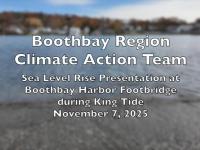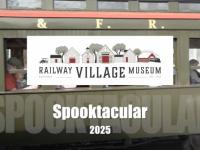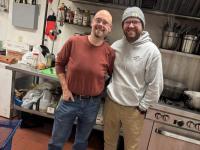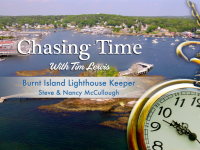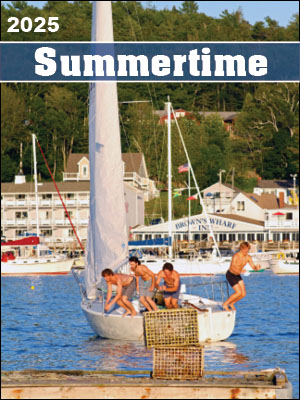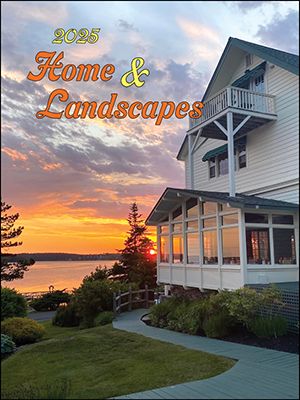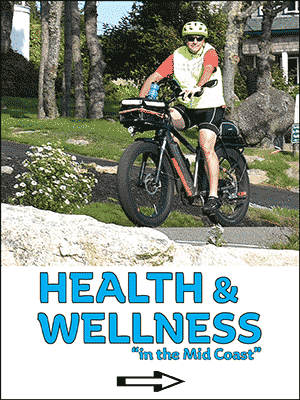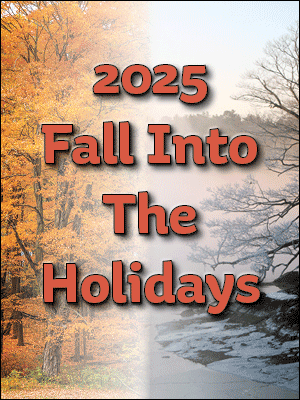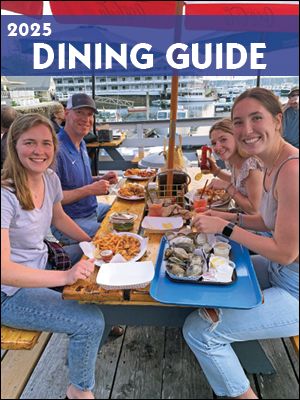Cultivating a taste for science
 A teacher at King Middle School with a strand of sugar kelp planted at Spartan Sea Farms in Casco Bay. Courtesy of Boothbay Sea and Science Center
A teacher at King Middle School with a strand of sugar kelp planted at Spartan Sea Farms in Casco Bay. Courtesy of Boothbay Sea and Science Center
 Middle schoolers collect data on the sugar kelp they started as seedlings in their classroom tank. Courtesy of Boothbay Sea and Science Center
Middle schoolers collect data on the sugar kelp they started as seedlings in their classroom tank. Courtesy of Boothbay Sea and Science Center
 Teachers from Biddeford Middle School, Pownal Elementary School, Scarborough Middle School and King Middle School at Spartan Sea Farms to harvest seaweed. Courtesy of Boothbay Sea and Science Center
Teachers from Biddeford Middle School, Pownal Elementary School, Scarborough Middle School and King Middle School at Spartan Sea Farms to harvest seaweed. Courtesy of Boothbay Sea and Science Center
 Seaweed being delivered to teachers and students after at Winslow Park in Freeport. Courtesy of Boothbay Sea and Science Center
Seaweed being delivered to teachers and students after at Winslow Park in Freeport. Courtesy of Boothbay Sea and Science Center
 A teacher at King Middle School with a strand of sugar kelp planted at Spartan Sea Farms in Casco Bay. Courtesy of Boothbay Sea and Science Center
A teacher at King Middle School with a strand of sugar kelp planted at Spartan Sea Farms in Casco Bay. Courtesy of Boothbay Sea and Science Center
 Middle schoolers collect data on the sugar kelp they started as seedlings in their classroom tank. Courtesy of Boothbay Sea and Science Center
Middle schoolers collect data on the sugar kelp they started as seedlings in their classroom tank. Courtesy of Boothbay Sea and Science Center
 Teachers from Biddeford Middle School, Pownal Elementary School, Scarborough Middle School and King Middle School at Spartan Sea Farms to harvest seaweed. Courtesy of Boothbay Sea and Science Center
Teachers from Biddeford Middle School, Pownal Elementary School, Scarborough Middle School and King Middle School at Spartan Sea Farms to harvest seaweed. Courtesy of Boothbay Sea and Science Center
 Seaweed being delivered to teachers and students after at Winslow Park in Freeport. Courtesy of Boothbay Sea and Science Center
Seaweed being delivered to teachers and students after at Winslow Park in Freeport. Courtesy of Boothbay Sea and Science Center
For almost a decade, Boothbay Sea and Science Center (BSSC) has been bringing peices of the ocean into Maine classrooms. BRCC’s Exploring the Science of Seaweed Farming program works with Maine schools to integrate aquaculture lessons and science education over several months. This October, dozens of teachers met in East Boothbay for a program workshop, gathering the cohort together for the first time.
Teachers across Maine, from Boothbay to Greenville and beyond, came to be a part of the program, which spans 25 schools. BSSC says the grant-funded opportunity fosters an understanding and appreciation for Maine's seaweed farming industry by providing teachers tools and training to facilitate hands-on science learning.
“The real goal is to have this project be a no-fuss project for the teachers,” said BSSC Executive Director Pauline Dion. "It's really not intended to add one more thing to their plate. It's to really help them accomplish the goal of experiential learning, experiential activities, without having to go search for equipment and the things that they need.”
In its ninth year, the program delivers each teacher with equipment they need to grow seaweed, including tanks, seedlings and 25 gallons of filtered seawater from Darling Marine Center. After around five weeks, BSCC picks up the seaweed and plants it along marine drop lines at one of its partner farms across the state. In April, they harvest the seaweed and give it back to teachers, who help students measure, collect data, and even make food products, all while the educators weave seaweed and aquaculture into the curriculum.
“This program opens up lessons and conversations with students about things such as working waterfronts, aquaculture, data collection and interpretation,” Southport Central School teacher Julie Browne said. “It also makes a connection to more in-depth science lessons about the data they are collecting, such as the meaning of the pH scale.”
“You can tie it into whatever you are covering,” said Sarah Redmond, who provides all the program's seedlings from her farm, Springtide Seaweed. At the workshop, Redmond gave a lesson on science and how the macroalgae is an active player in a complex food web.
Seaweed takes out nutrients from the water and packages them into an edible form, which she said is one reason it's so nutritionally dense. It’s also beneficial for the marine environment. Redmond explained it provides similar ecosystem services to land plants, such as providing oxygen, food and shelter. She said those perks come without the same energy requirements, land use and chemicals as traditional farming, all added benefits for ecosystem restoration.
However, as the Gulf of Maine warms along with the planet, seaweed habitats are changing. Seaweed is resilient and can grow in places like Long Island Sound, which Redmond called “a pot of warm water.” But seaweed prefers cold, temperate conditions, and Redmond said one of the largest challenges is finding native seaweed variations adapted to their microenvironment.
According to BSSC, the program is designed to address these and other challenges, such as pollution, ocean acidification, human development and invasive species. Their website says it stimulates investigation and challenges critical thinking about future problems and solutions. To do that, it starts as small as a seed.
During the workshop, Redmond showed the teachers how to grow and cultivate seaweed in their classrooms with paper towels and water. They were engaged and enthusiastic, asking what kind of water is best and what other organisms could cohabitate. One said they are fortunate because they don't have to grow the biggest and best seaweed to sell, so they can play around with variables to run a classroom experiment.
“This program is such a great opportunity for students to not only learn about science, but to do science in real time. They are the scientists and get to see the whole process through,” Browne said.
Browne’s classroom, a mix of fourth through sixth graders, sets up a tank where kelp grows for around six weeks. During that time, they collect data daily, measuring the temperature, pH and salinity of the water. Students also keep a written log of their observations, noting growth and environmental conditions. Browne has been involved with the program since it began and said the program has helped students learn about types of seaweed, parts of a kelp plant, photosynthesis and how environmental conditions may affect the kelp.
Boothbay Region Elementary School Principal Shawna Kurr said the program is a powerful example of place-based education. She said by growing kelp, students engage with their environment and see math and science skills used in a real-world industry.
“Our sixth graders learn the value of stewardship by actively contributing to the health of our local waters. This project also connects the school directly to the local working waterfront and the growing aquaculture industry,” she said. “By growing kelp, students engage with their environment, which deepens learning better than a textbook.”
Kurr, Browne and other educators said the program also helps meet curriculum requirements, such as Maine Learning Results in Science and Next Generation Science Standards. Teachers said activities cover standards such as how links between environmental and genetic factors influence growth, explain relationships between natural resources and Earth systems, and construct scientific explanations based on evidence.
“The program really allows the students to learn necessary science standards by doing real science,” Browne said. “There is nothing more powerful in learning than making the learning real and meaningful.”



















